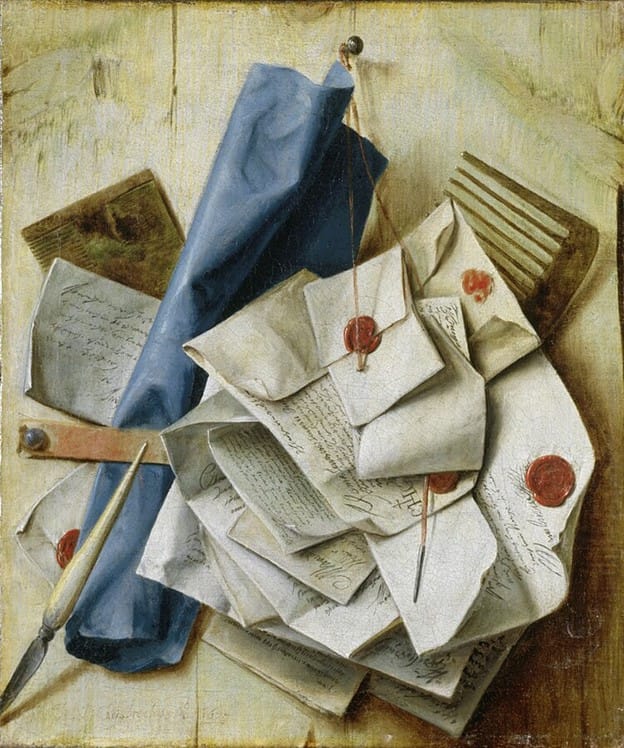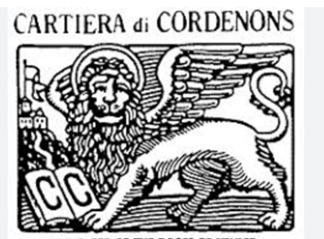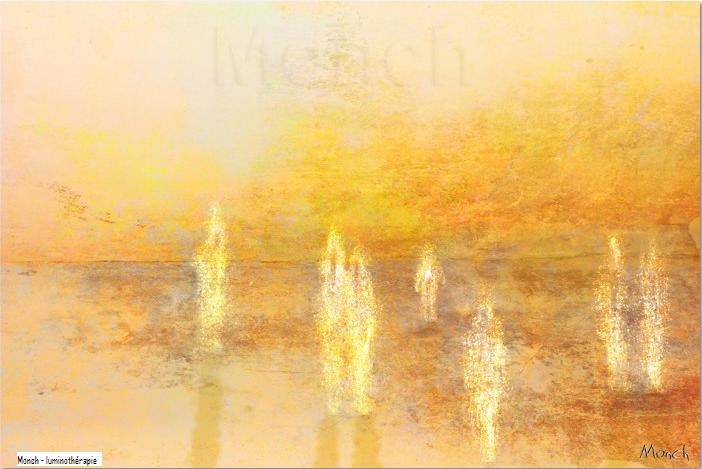A 400-Year-Old Paper Mill and Sealing Wax

Puff, the magic dragon lived by the sea
And frolicked in the autumn mist in a land called Honah Lee
Little Jackie Paper loved that rascal Puff
And brought him strings, and sealing wax, and other fancy stuff
— "Puff the Magic Dragon" by Peter Yarrow of Peter, Paul and Mary
Many years ago, I briefly worked at a very old paper mill called “Cartiera Galvani” in Cordenons, a small town in northeast Italy. It no longer exists as a functioning mill there, although I believe there is another “Galvani” paper producer in a different city of a neighbouring region.
Despite the mundane tasks I performed working in the sales department, there was a certain magic about the place. The mill had been founded in 1630 by the Avenzo Counts of Pordenone. Around 1730 it was sold to the Galvani family, who were part of an entrepreneurial dynasty at the time.
From its inception, the paper mill was known for its quality products. Their fame was such that the Doge of Venice insisted upon only using their paper.

My office was in a building likely dating from Napoleonic times. The floors were made of wood (unusual in Italy) that didn’t exactly creak but more groaned when tread upon. It didn’t sound like a protest, but more an expression of resignation to being walked upon thoughout the centuries.
The ceilings were very high, as were the windows. Not having screens, once you opened the casements you could lean out and drink in the fresh air. My desk was next to a window that overlooked a lively little creek. Depending on the colour of the paper being produced, the creek would often be brightly tinted with the mill's discharge (this was well before anyone cared about environmental issues): crimson, azure, lemony yellow, pink, lilac. Despite being inherently bad, it was startlingly pretty.
The most magical task I would be asked was to locate older files in the archives. By “older”, I mean I was asked to find some paperwork from months or perhaps years prior. However… the archives contained documents going back centuries.
The floors of the archive were older, with wider floorboards, and the documents were stored on tall wooden shelves. The room was rather dark, with gloomy corners towards the back, and vaguely aromatic of old paper, ancient wood, and sealing wax. One had a sense of entering a hushed and historic, almost sacred, space. All sound was deadened in the archive, and my footsteps were silent: the only sound would be the ruffling of the papers I would handle. Of course, the archive mostly contained old invoices, various types of correspondence, and more modern copies of telegraphs, but in my mind it was a chapel of ephemera.
The task was to simply retrieve some document and emerge quickly, but I would linger, making up excuses about the difficulty in finding the right box, the proper shelf, and bemoaning the lack of organization. None of this was exactly false, but it conveniently afforded me a few extra stolen moments of sheer enchanted bliss.
The older documents from centuries past beckoned to me. Many were loosely stacked on the shelves towards the back of the rather cavernous room. The paper used at that time was made from rags, linen or cotton, and not from the more modern process using cellulose. It was thick, soft, creamy, bone white, and curled ever so slightly along the edges, not yellowed like lesser, more modern papers. It was magical.
The sheaves were often gathered into folios, tied with ribbon, and secured with bright red dabs of sealing wax, each impressed with the sigil or device of the authority of the time. Some were very basic, merely circles or geometric images, while others were far more ornate. Occasionally a seal was cracked where it had been previously opened; others were still intact with their contents still hidden. In all likelihood these were mundane commercial documents, but I envisioned arcane writings, whispered confessions, ancient stories. In reality the most engaging content would likely have been a lawsuit or some legal matter. But not in my fanciful imagination.
Sealing wax is a wonderful material that hardens quickly after melting. It can be dripped onto paper, parchment, ribbons, wire, and other materials, where it forms a hard-to-break bond. Sealing wax has very little effect on the materials to which it is applied. It doesn’t stain or permeate anything at all.
In the context of documents, sealing wax was of course used to seal letters and envelopes and to denote the sender’s identity via the impression of a stamp or signet ring.
I had run across sealing wax in a previous workplace. The company made office furniture and at the time was unbelievably active with larger tenders for the Middle East. Protocol dictated that all the documentation for these tenders had to be presented in folders sealed in wax with the company emblem upon them. One of my tasks was to melt the sticks of crimson sealing wax and drip a dollop on the top over-wrap. I would then press the company’s brass sigil into the wax while it was still warm and pliable. To produce the best impression I was taught to heat up the stamp to about the same temperature as the cooling wax, then press and release quickly. The scent wafting up was unforgettable.
What was that scent? And what, exactly, is sealing wax?
Interestingly, prior to the development of sealing wax, ancient Romans used bitumen for similar purposes. Early sealing wax was made of colophony, a resin distilled from the gum of maritime pines that grow in southern France, Spain, Portugal, Greece, and as far away as China. Colophony is melted and then mixed with chalk and colouring agents.
The formulas used to make sealing wax varied over time. In the Middle Ages beeswax was the main ingredient mixed with “Venice Turpentine”, a greenish-yellow resin from the European Larch tree. The red colour was usually obtained with vermilion or red lead. Other ingredients used after the 16th century were shellac and chalk. At times sealing wax was scented with ambergris, musk, and other aromatic substances.
More recently (as in the last 100–200 years), sealing wax contained no wax at all. The most refined formula was seven parts shellac, four of Venice turpentine, and three quarters of vermilion. In the latter part of this timeframe, ambergris was no longer used to scent the product; storax of Balsam of Peru was used instead. More “common” or non-document paper grade sealing wax still uses chalk, along with carbonate of magnesia, and various pigments.
One of the “magical” ingredients is the Venice Turpentine. Unlike what we normally think of when referring to turpentine, the Venice variety is a resin and not a solvent. Sometimes called Larch Turpentine, it is the undistilled, full-bodied sap of the larch tree, and it has nothing added to or removed from it. Venice Turpentine is thick and viscous like cold honey. It smells of pine and fruit, so if you run across sealing wax that smells like a solvent you do not have the genuine article.
An interesting side note: Venice Turpentine was also added to amulets for magical purposes. The belief in its magical properties was in part due to its duality, altering from a solid to a molten and back to a solid state. Furthermore, it smells enchanting.
Additionally, it has some verified antimicrobial medicinal properties, which quell infections and ease inflammation. It was and still is occasionally used internally for lung infections, nerve pain, joint pain, and several other conditions. Some are quite convinced of its efficacy when used internally, but there is no current scientific evidence to support this belief.
The other major component in sealing wax is shellac. Shellac, made from the secretions of an insect, is a natural thermoplastic. In other words, it is soft enough to flow under pressure when heated, but becomes rigid at room temperature. I remember my father using shellac in the crafting of wood furniture, and I know that many buttons used by my mother in her sewing projects were made with shellac.
Regarding its odour, shellac smells just faintly of alcohol. Venice Turpentine, on the other hand, is a tree product that contains lignin, which emits benzaldehyde and vanillin, giving the sap a light aroma of vanilla.
Such a wonderful sensory memory. The age of the building and its long history. The softness of the paper. The lively little psychedelically coloured creek. The groaning floorboards. The hushed archives. And the wondrous scent of rag paper, old wood, and warm sealing wax.
What bliss.
Would you like to read other posts? If so, please click the Home Page link below:

You, Dear Reader, are much needed and appreciated.
Everything written requires a reader to make it whole. The writer begins, then you, dear reader, take in the idea and its image, and so become the continuation of its breath. Please subscribe so that my words can breathe. Consider this my hand, reaching out to yours.
